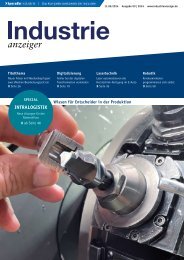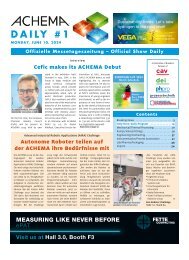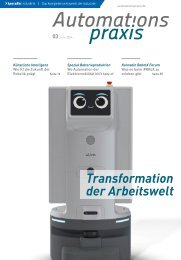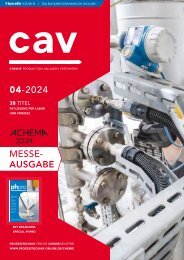EPP Europe P2.2023
You also want an ePaper? Increase the reach of your titles
YUMPU automatically turns print PDFs into web optimized ePapers that Google loves.
5S and cleaning processes<br />
One of the main causes of PCB failure is contamination.<br />
If not cleaned sufficiently, PCBs are susceptible<br />
to many problems – from electrochemical migration<br />
and delamination to parasitic leakage, dendrite<br />
growth and shorting. Cleaning is crucial to ensuring<br />
the reliable, long-term performance of a PCB.<br />
Cleaning processes should be quick and consistent.<br />
Implementing the 5S methodology helps achieve this<br />
goal.<br />
Seiri / Sort<br />
To begin, it is essential to look at all the items on<br />
the benchtop and ask yourself the following questions:<br />
• Is this item necessary to clean the PCB and electronic<br />
components?<br />
• When was it last used?<br />
• Does it clean effectively?<br />
In this way, you can determine which items on the<br />
benchtop are required for the job. Certain tools and<br />
cleaning fluids may have worked well last year but as<br />
new designs and components are introduced, these<br />
may no longer perform as they once did. A no-clean<br />
solder paste may have been added to the assembly<br />
process and the available flux remover may not be<br />
strong enough to remove the stubborn no-clean flux<br />
white residue, for instance. Perhaps a fragile or<br />
moisture-sensitive component has been added to the<br />
design which can only be hand-soldered. Selectively<br />
soldered PCBs usually undergo ‘spot-cleaning’ at the<br />
benchtop using aerosol flux remover and a brush but<br />
if the cleaning fluids are too strong for these delicate<br />
components, they can cause damage and result in<br />
scrapped boards.<br />
A controlled cleaning fluid dispensing system is an<br />
essential tool on every PCB cleaning bench. When<br />
appropriately used, this system improves PCB cleaning<br />
results by targeting dirty areas on the board, getting<br />
under low-mounted components and permeat-<br />
Contaminated PCBs<br />
typically will not pass<br />
final inspection<br />
Source: MicroCare<br />
Messe Frankfurt Group<br />
11 – 13.6.2024<br />
NUREMBERG, GERMANY<br />
DRIVING<br />
MANUFACTURING<br />
FORWARD<br />
Shape the future of electronics<br />
manufacturing and become<br />
part of the community.<br />
Join us an<br />
exhibitor<br />
smtconnect.com<br />
<strong>EPP</strong> <strong>Europe</strong> » 11 | 2023 45















